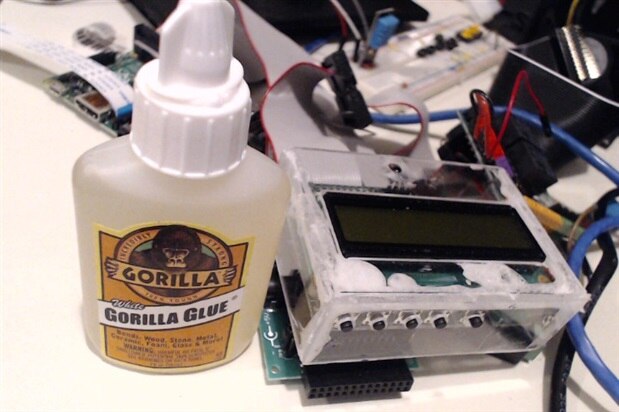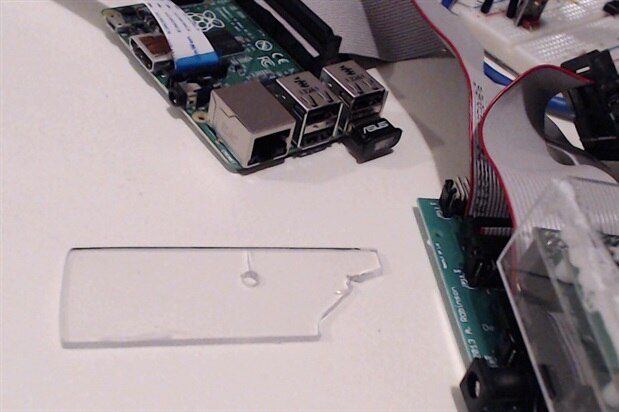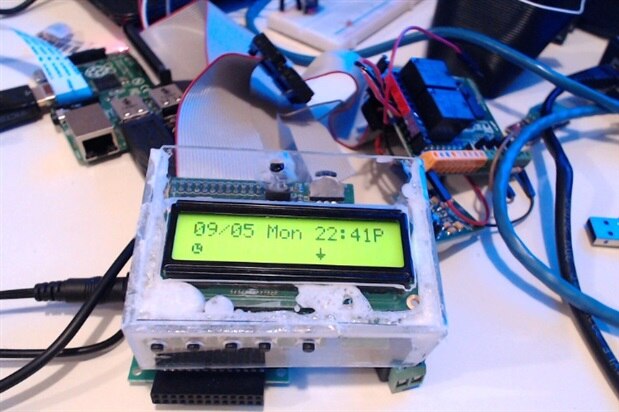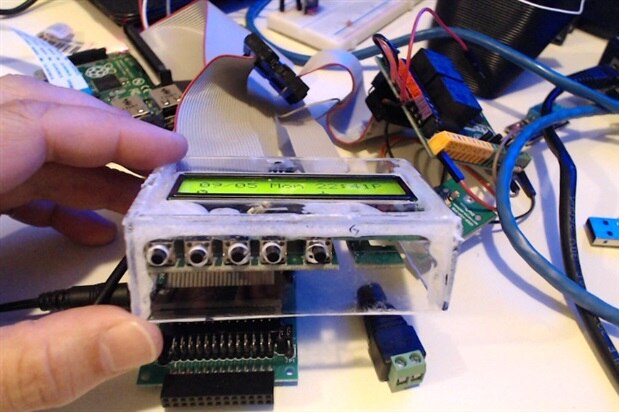Acrylic Case
I'm not sure if it is proper to continue the blog after the challenge, so someone could smack me around if not, but I plan to continue working on the project so here be a short post post.
At the end of the challenge, the parts of the Feeder System were sprawled out on the table but I do plan to have them tucked away into some sort of enclosure. I decided to take a stab at creating an enclosure using acrylic sheets, and after 2 days of work using a Radio Shack dremel tool and a drill, I was able to get the Pi Face Display and Control enclosed. It would have been much easier to tap into the local Hacker Lab or MakerHQ to use their laser cutter or 3D printers, but I'm a glutton for punishment and wanted to see what I could do on my own. What I did learn is that acrylic is not easy to work with. Getting 99% done with a part to have it crack or break while trying to drill the final hole can be frustrating. Also, when gluing ( or rather welding Acrylic ), it would be best to obtain the proper material for doing so. In my case, the local ACE Hardware folks had no idea of what to use to weld acrylic, so I snatched up a bottle of Gorilla Glue (a.k.a. Gorilla Snot); later I discovered there is a Tap Plastics location not far from my home. What I found with the Gorilla Snot is that it has a strange chemical reaction with plastic and the little dabs of glue that were placed in the cracks of the case kept growing and expanding leaving what certainly looks like Gorilla Snot. The good thing was that this covered up any gaps in the seams and disguised the flaws in the cuts.
I found a good video that showed the proper way to drill the holes in acrylic which includes starting with a small size drill bit and working up bit by bit to the size needed. Otherwise, if you drill a pilot hole and then try to use the larger bit, the acrylic will crack. I found drilling the piece when it was still part of a lager sheet made things a bit easier.
So, after all the frustration, I ended up with a fairly nice looking case for the PiFace Display and Control which will be part of a larger case to enclose the rest of the devices. "Baby Steps."
This is what the case looks like with the Display and Control place in it; note the white snotting looking stuff on the edges and in the lower part of the case; this be the dried Gorilla Snot.
The bottom with button access.
That is all I have for now, and unless someone tells me otherwise, I'll just keep posting the updates to this and work to completing the system.
Cheers,
Jon





Top Comments
-

balearicdynamics
-
Cancel
-
Vote Up
+2
Vote Down
-
-
Sign in to reply
-
More
-
Cancel
Comment-

balearicdynamics
-
Cancel
-
Vote Up
+2
Vote Down
-
-
Sign in to reply
-
More
-
Cancel
Children